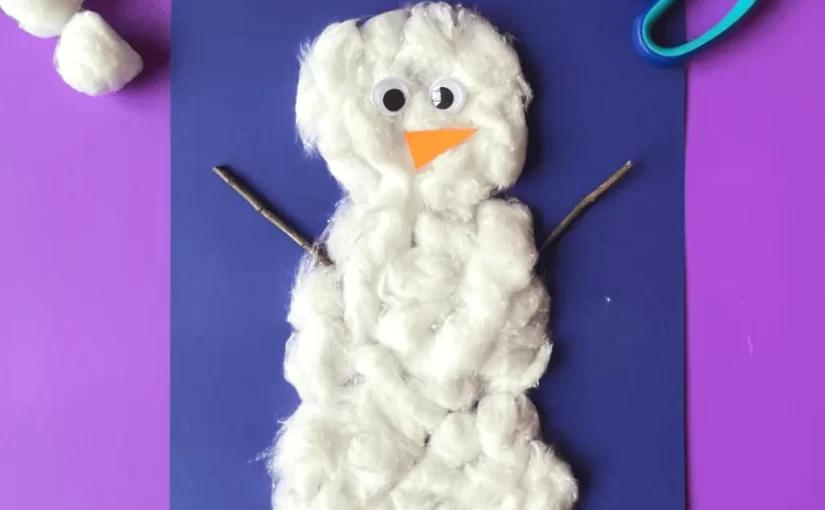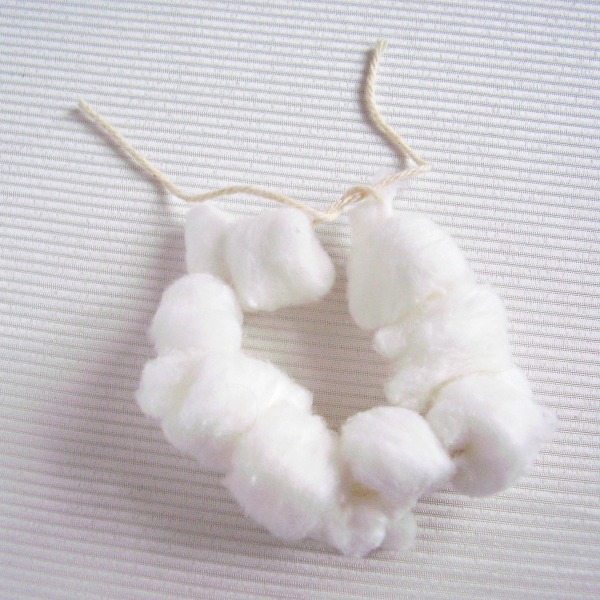Creative Uses for Cotton Balls in Sensory Play
Introducing cotton ball sensory activity can spark creativity in many fun ways. Let’s explore some engaging activities using these soft, fluffy staples.
Using cotton balls, kids can develop their fine motor skills and sensory awareness. For instance, they can pinch, stretch, and roll cotton balls to manipulate their shape and texture. This tactile experience is not only enjoyable but also beneficial for their developmental growth.
Another activity involves creating a mini winter wonderland. By spreading cotton balls across a tray, children can pretend they’re playing with snow. Add some miniature figures, like animals or characters, and watch them craft imaginative stories in their snowy scene.
Moreover, cotton balls can serve as pretend food in a play kitchen. Little chefs can use them as ingredients to whip up ‘meals’, enhancing their imaginative play and role-playing skills.
To include a sensory activity in arts and crafts, have children glue cotton balls onto paper to create fluffy animals, clouds, or beards on pirates or wizards. The soft texture of the cotton balls adds a unique dimension to their artwork.
Lastly, for a quiet and calming activity, guide children to slowly pass cotton balls over different parts of their body. They’ll feel the soft touch and can learn body part names, contributing to both sensory processing and language development.
These cotton ball sensory activities are simple, cost-effective, and offer children a diverse range of learning and fun.
Setting Up a Cotton Ball Sensory Bin
Creating a cotton ball sensory bin is a breeze and it’s a fantastic way to engage children in sensory play. Here’s a step-by-step guide to create this simple yet delightful sensory activity:
- Choose Your Bin: Find a shallow tray or a small plastic container. This will be the base of your sensory bin.
- Fill with Cotton Balls: Pour in cotton balls until you have a nice layer that fills the bin. Ensure you have enough to allow for full sensory exploration.
- Add Extras: To spice things up, you can include spoons or tweezers for moving the cotton balls, or even add other textures like fabric scraps or pompoms for contrast.
- Encourage Imagination: Introduce small toys or figures. These can be anything from animals, cars, or even little people. This gives children a prompt for imaginative play.
- Interactive Play: Encourage your child to dig, bury, scoop, and transfer the cotton balls from one place to another. This not only adds to the fun but promotes fine motor skills development.
- Language Development: While playing, talk about what’s happening. Use descriptive words like ‘soft’, ‘fluffy’, or ‘cloud-like’. This helps build vocabulary.
- Clean Up: The great thing about cotton ball sensory play is that it’s easy to tidy up. After play, simply store the cotton balls back in their bag or bin for next time.
Remember, the goal of a cotton ball sensory bin is not just to play but to explore senses and learn through interaction with a simple, accessible material. With minimal setup, your child can dive into a world of sensory discovery.
Cotton Ball Races and Coordination Challenges
Introducing simple, fun ways to play can also teach valuable skills. Cotton ball races are a great example. Set up a start and finish line on a table or the floor. Children try to blow cotton balls from start to finish. This activity improves breath control and coordination.
For an added challenge, create obstacles with toys or books. Kids must navigate the cotton balls around them. They learn to control their breath and movements more precisely.
Turn it into a game for multiple children by racing cotton balls side by side. This encourages healthy competition and social interaction.
Variations of this coordination challenge can include using straws to direct the cotton balls. Or, have children use a spoon to carry the cotton balls across a set distance without dropping them.
These cotton ball sensory activities are not just play. They are simple ways to develop fine motor skills, coordination, and have fun at the same time. Plus, they are easy to set up with materials you likely have at home.
DIY Scent Bottles with Cotton Balls
Creating DIY scent bottles is a fascinating cotton ball sensory activity that promotes sensory exploration. To begin, gather a few small containers like empty spice jars, baby food jars, or any small bottles you have. Sterilize them first to ensure cleanliness.
Here are easy steps to make your own scent bottles:
- Add Cotton: Place a cotton ball into each container.
- Choose Scents: Select different essential oils or flavor extracts. Go for a variety of scents.
- Add Drops: Put one or two drops of your chosen scent onto each cotton ball.
- Secure Lids: Make sure to close each container tightly.
- Label: You might want to label each bottle with the scent it contains.
Children can shake the bottles, open them, and smell the contents to guess the scents. This activity aids in developing their sense of smell and memory recall. It can also introduce new vocabulary as they describe different scents. With supervision, they can even make their own scented bottles, choosing and mixing scents to make unique combinations. This hands-on experience is perfect for engaging multiple senses and introducing the concept of cause and effect.
Remember to use the scents sparingly. A little goes a long way. And, always supervise the activity to prevent the little ones from tasting the contents.
Construction Play with Cotton Balls and Trucks
Transforming cotton balls into construction site materials can be both imaginative and educational. Here’s a simple guide to involving cotton balls in construction-themed sensory play with children’s trucks and diggers.
First, gather a variety of toy construction vehicles, such as dump trucks, excavators, and loaders. For the setup, you’ll need a shallow tray or container. It serves as the ‘construction site’ for this activity. Then, fill the tray with cotton balls to act as stand-ins for rocks and rubble.
Children can use their toy trucks to scoop, push, and transport the fluffy ‘materials’ from one end of the tray to the other. They simulate real-life construction tasks, honing their fine motor skills while fostering imaginative play.
As they play, introduce positional words like ‘under’, ‘over’, ‘left’, and ‘right’ to help develop their language skills. Encouraging kids to use their trucks to hide beneath the cotton ball ‘rubble’ and then find them again can add an element of surprise and adventure to their sensory playtime.
A cotton ball construction play also allows kids to tell their own stories, expanding their creative thinking. Children are natural storytellers, and this setup gives them the tools to create narratives around their play.
This cotton ball sensory activity is not only a hit with children due to its simplicity but also because it engages multiple senses and developmental areas, such as touch, sight, coordination, and cognitive understanding of the world around them. Plus, it’s a budget-friendly activity that utilizes readily available items.
Baked Cotton Ball Experiment for Tactile Exploration
The baked cotton ball experiment is a sensory delight that combines art with science. It begins with a simple mixture of water, flour, and paint, which little hands can mix. Then the fun part: dunk the cotton balls into this gooey concoction. Children can arrange them on foil or parchment paper, squishing and squashing to create unique shapes.
Next comes the magic of transformation. Pop these coated cotton balls into the oven at 300 degrees Fahrenheit. You’ll need to check on them after about 15-20 minutes. The result? A fascinating crunchy shell around a soft center, perfect for sensory exploration.
Let’s not forget the pure joy of destruction in this activity. Once cooled, children can smash these baked cotton balls with a small hammer or even a kitchen utensil. The contrast between the hard exterior and the soft interior offers a tactile surprise that’s thrilling for kids.
This experiment is more than just play. It helps grow fine motor skills as kids grasp and manipulate the cotton balls. Plus, the baking part introduces them to the concept of cause and effect. The result is a multi-sensory experience that sparks curiosity and creativity. And the best part? It’s inexpensive and makes use of common household items.
Cotton Ball Painting Techniques for Fine Motor Development
Cotton balls aren’t just for cleaning or crafts; they’re great for painting too! Here are some painting activities that promote fine motor skills using these soft items.
Start with making homemade stamps. Use clothespins to hold cotton balls, and dip them in paint. Kids can then stamp onto paper, creating interesting textures. It’s a hands-on way to improve their grip strength and control.
Another idea is finger-painting with a twist – instead of fingers, use cotton balls! This change can help kids who don’t like getting messy still enjoy painting. Kids dip cotton balls in different colors, and dab or swirl them on paper. This activity enhances creativity and coordination.
For those ready for more challenge, introduce cotton ball brush painting. Attach several cotton balls to a stick or skewer to make a brush. Children use this to paint on large surfaces like easel paper, practicing big arm movements. It’s fun and helps them learn pressure control.
Finally, try combining cotton ball painting with learning. Have children use the cotton balls to paint letters, shapes, or numbers. This promotes recognition abilities alongside motor skill development.
These painting activities don’t require expensive materials. They use simple cotton balls, but they are big on fun and learning.
Additional Fun Cotton Ball Sensory Activities
Beyond the cotton ball activities already discussed, there are plenty more ways to engage children with this soft, versatile material. These additional activities can spice up playtime, enhance sensory experiences and continue to develop fine motor skills.
- Cotton Ball Caterpillars: Children can create caterpillars by gluing cotton balls in a line on paper. They can add eyes and antennas using markers or other craft materials. It encourages creativity and can be a precursor to learning about insects.
- Cotton Ball Sift and Find: Hide small objects within a bin filled with cotton balls and provide children with sifters or tweezers to find and retrieve them. This activity is great for problem-solving and pincer grasp practice.
- Cotton Ball Drop: Use a cardboard tube mounted on a wall or held in place, and children can enjoy dropping cotton balls through it, watching them spiral down to a container at the bottom. It’s a simple physics lesson in action and enhances hand-eye coordination.
- Winter Holiday Decorations: For a festive twist, use cotton balls to make snowmen or holiday-themed scenes. Adding glitter or sequins can make it even more exciting. This activity is perfect for spatial awareness and fine motor control.
Each of these creative uses of cotton balls in sensory play allows children to explore, learn, and have fun with just a handful of everyday items. Remember to keep using those sensory skills and let each child’s imagination run wild!



